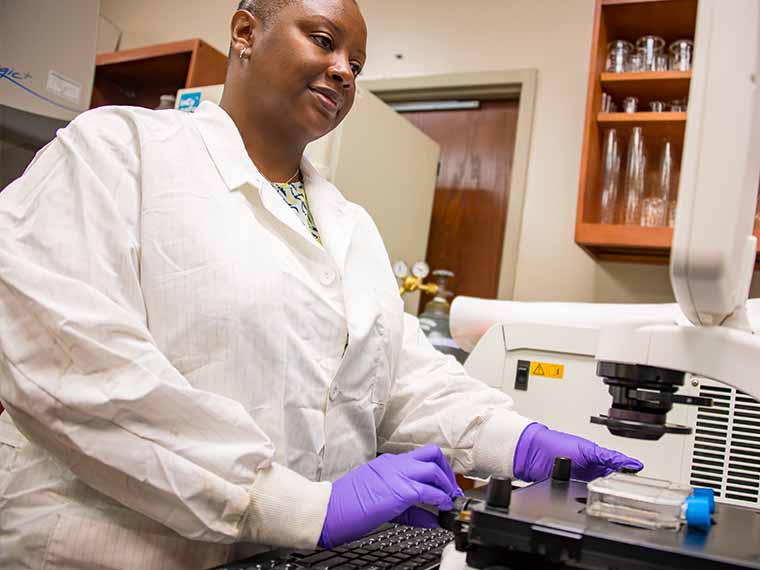The information presented on this page may be dated. It may refer to situations which have changed or people who are no longer affiliated with the university. It is archived as part of Mississippi State University's history.
Cardiovascular disease remains the leading cause of death in the United States, responsible for 840,768 deaths or one third of the deaths based on 2016 data. That translates to one death every 38 seconds according to the American Heart Association.
To combat those statistics, Dr. LaShan Simpson, Mississippi Agricultural and Forestry Experiment Station scientist and associate professor in the Department of Agricultural and Biological Engineering, said researchers need models that are more precise.
"Better models are needed to more accurately and effectively study therapies and treatments," she said.
Recently, Simpson designed just that-a three-dimensional bench model for diseased arteries.
"This model will change the way cardiovascular research is conducted," Simpson said. "Rather than examining only one or two properties of vascular cells at a time, the fully detailed, three-dimensional model captures the complexity and nuances of functioning blood vessels so that cells can grow and proliferate as they would in the body."
She said the model will help scientists rapidly understand disease processes, how the cells respond to mechanical and chemical stimuli, and potential treatments. According to Simpson, the model not only surpasses two-dimensional models, it better mimics vascular tissue, like that of veins, arteries, and capillaries, compared to three-dimensional models currently available.
"The proposed model can potentially transform research, because it would improve the transition from laboratory studies conducted in test tubes and culture plates to clinical studies in a simulated living organism, providing qualities other bench top models currently do not," Simpson said. "It's reproducible, consistent, and made from a synthetic material that's easily available."
The new model is designed to help researchers test different drugs and treatment methods with greater ease, reducing the need to risk lives.
"Not only will this be useful for biomedical researchers, it will also be useful for researchers studying treatment alternatives by providing a three-dimensional, relevant test model for medications," Simpson said.


